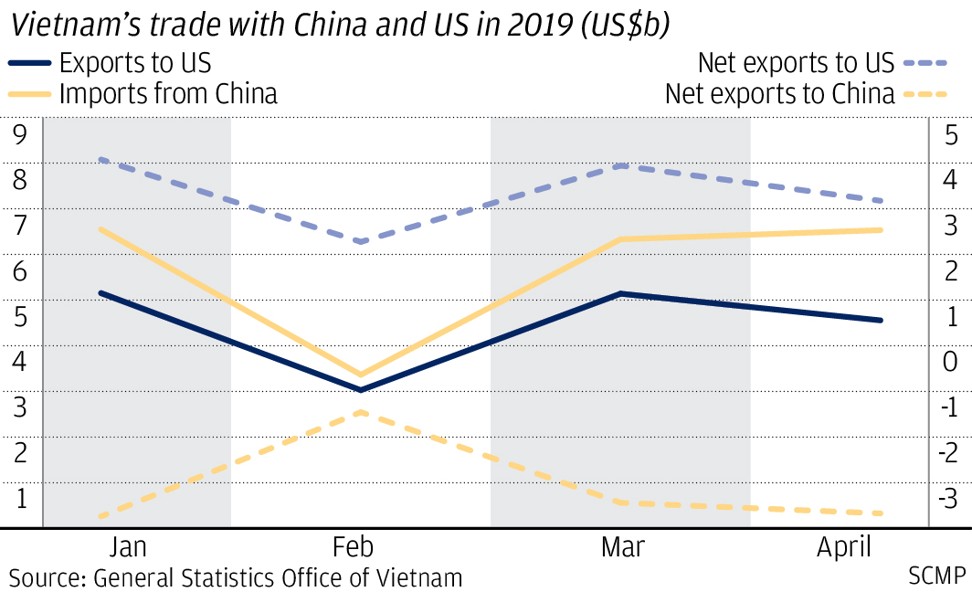
Vietnam’s April trade deficit widens, showing country’s commerce actually deteriorated amid US-China trade war
- Vietnam’s net export position has deteriorated since the US-China trade war escalated, a Bank of America Merrill Lynch study has found
- Vietnam saw a trade deficit of around US$600 million in April
Vietnam’s imports from China are growing at a much faster rate than exports to the US, as manufacturers in the Southeast Asian country rely heavily on final-stage assembly or re-exports, tapping opportunities in the trade war between the world’s two largest economies, a study by Bank of America Merrill Lynch showed on Wednesday.
“Vietnam’s net export position has deteriorated since the US-China trade war escalated. Exports to the US have risen, but these have more than been compensated by imports from China,” the report said.
The preliminary figures published by Vietnam’s General Statistics Office for the first four months of the year showed that exports were valued at US$20.4 billion, while imports stood at US$21 billion, resulting in a trade deficit of around US$600 million. This was in contrast to a US$1.4 billion trade surplus in March.
Vietnam’s exports to the US resulted in a trade surplus of US$3.2 billion in April. However, the trade deficit with China widened to US$3.7 billion with China. It has climbed from US$1.5 billion in February to US$3.4 billion in March.
“Between April 2018 and April 2019, exports of computers, electronic parts, phones and textiles have grown the most in US dollar terms. Yet, the country has also seen sharp increases in imports of computers, electronic goods and machinery over the same period,” said the BofA report, led by Sanjay Mookim.
He said there were two explanations to make sense of the numbers.
“Firstly, Vietnam has to import large amount of raw materials from China, because you cannot build the entire supply chain in six months, and what Vietnam could do for now is largely final assembly,” he said, adding that it hardly amounts to any value addition.
The second explanation was that a lot of exports from Vietnam to the US were actually re-exports of imports from China, to bypass tariffs. For such business, there was no value generated in Vietnam.
Mookim said that under either situation, it was still China that was benefiting from most of the value created.
In US-China trade war, Indonesia looks like a loser. But it could be a winner
The BofA report also noted that apart from Vietnam, Mexico, Malaysia and Canada’s machinery and mechanical sectors stand to gain in case the US diverts orders from China.
The report also pointed out that to replace exports from China, other countries must work on creating manufacturing advantages, besides providing cheap labour.
India, Vietnam benefit as trade war drives production out of China
“China ignited its export miracle with principally a labour cost advantage. Yet, there was a concerted effort by policymakers in the country in creating and attracting export oriented businesses,” the report said.
“Various structures relating to land, labour, capital, tax incentives were created to facilitate the export machinery.”


